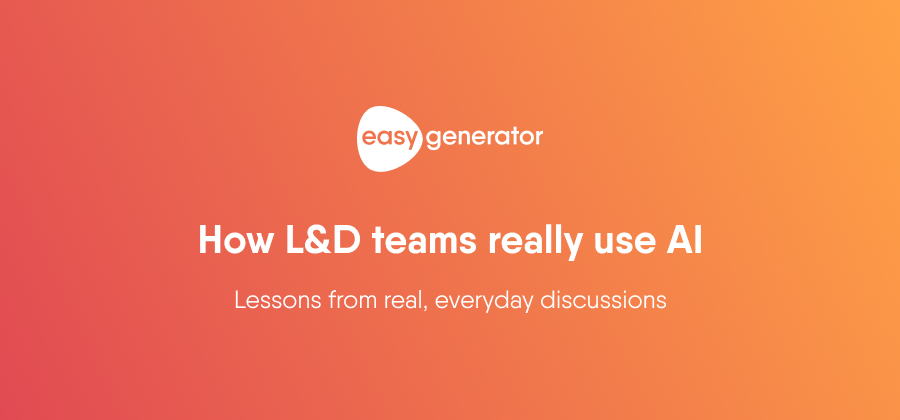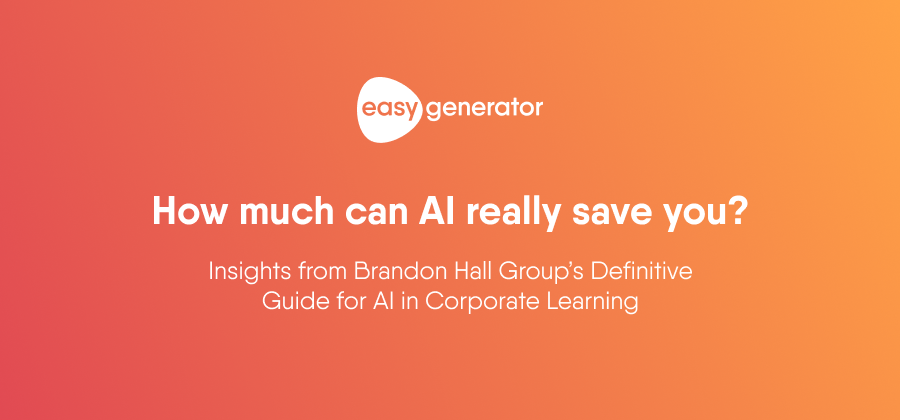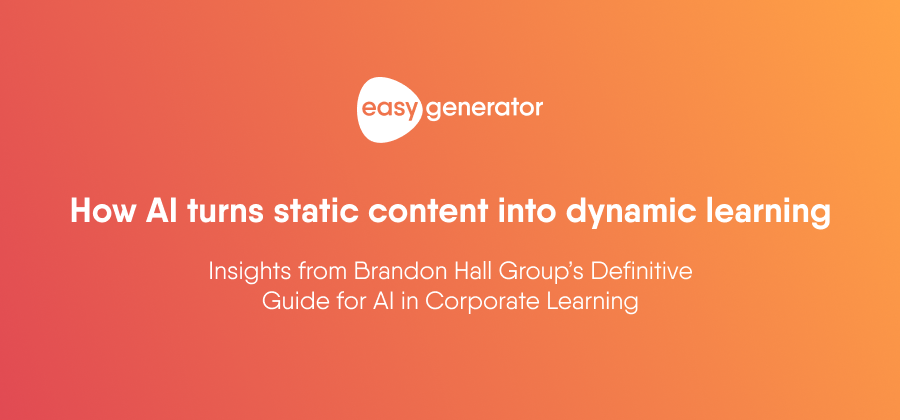The 4 tectonic shifts in L&D: tools, systems, and platforms
In part 1 of this series, we listed some of the major events in the learning and development (L&D) landscape. We also looked at how they might affect your organization. In this next part, we’ll focus on how these trends will impact the learning systems and platforms that are currently in use.
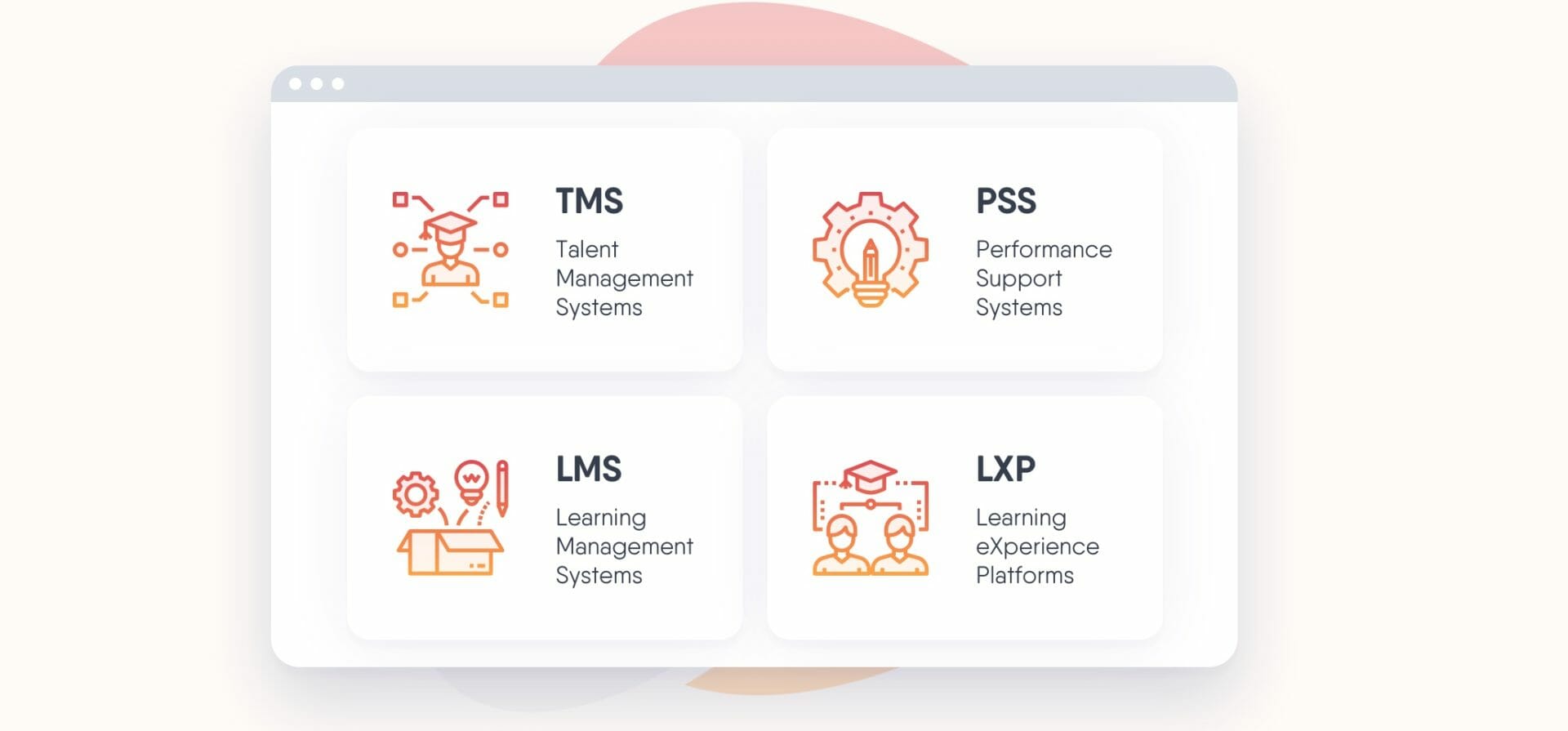
According to leading learning specialist Josh Bersin, about $28.8 billion (12%) of the $240 billion spent on corporate training goes towards learning tools. That means any future developments will have a massive impact on this market.
The four major trends we described in part 1 included the following transitions:
- From formal learning towards informal learning
- From a top-down approach towards a bottom-up approach
- From a learning approach towards performance support
- From a knowledge focus towards a skills focus
The grid below has four quadrants – each representing a specific set of learning tools:
- Talent Management Systems (TMS) for talent development
- Learning Management Systems (LMS) for formal learning
- Learning eXperience Platforms (LXP) for knowledge sharing
- Performance Support Systems (PSS) for performance and workflow support
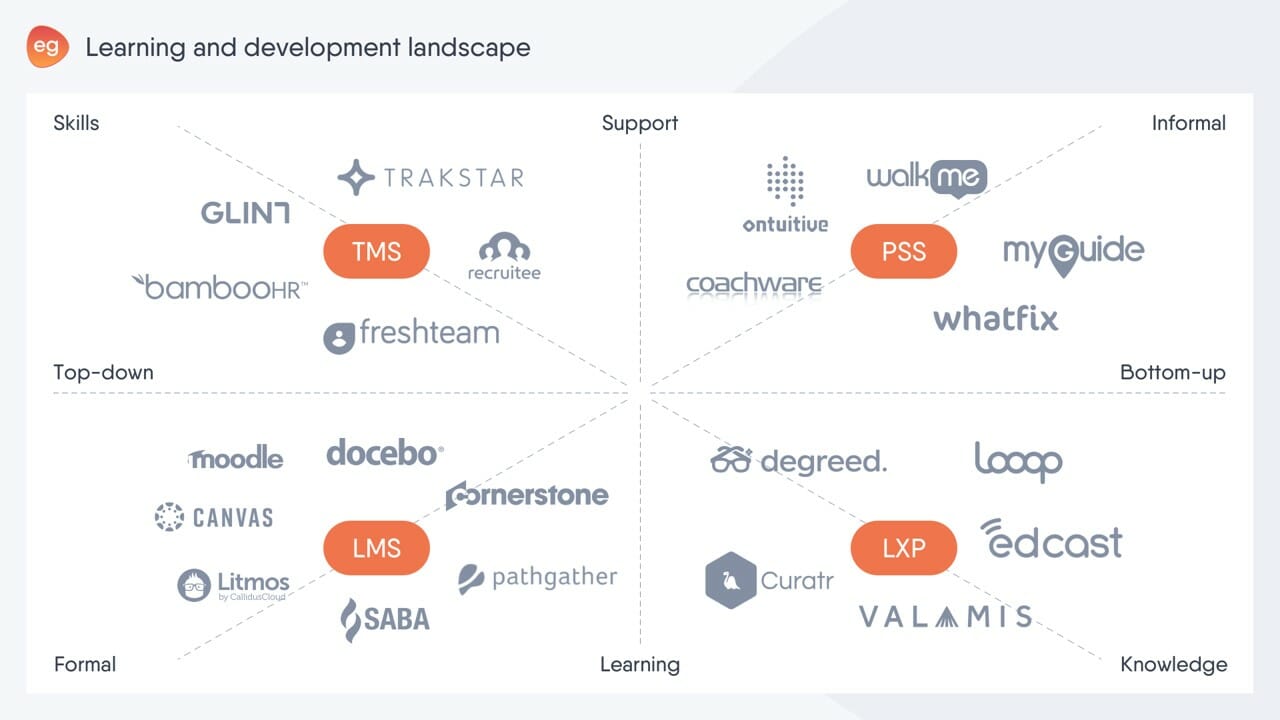
Talent Management Systems
Talent Management Systems (TMS) are HR-based and focused on recruitment and skills development.
These tools are more associated with employee development than learning. For example leadership development and performance management. They help focus on strategic business goals. Employees are encouraged to formulate their own performance goals to fill any skill gaps and meet business goals.
TMS take a top-down approach and are limited in what they can offer. Mostly because they don’t directly link to courses on the web or the organization’s learning system. This lack of integration means TMS have far less of an impact on learning than some of the tools in the quadrants.
Learning Management Systems (LMS)
Learning Management Systems (LMS) often are key to a traditional, top-down e-learning approach. For a long time, they were the main channel for L&D departments to push and manage learning throughout their organizations.
LMS are designed to support L&D with managing their learning initiatives. They are not designed with the learners themselves in mind. But with the growing emphasis on knowledge sharing and performance support and the onus on learners to take charge of their workplace development, LMS are generally on the decline.
Some LMS try to get around this by improving their interface, or by adding features that encourage a more learner-driven model. Those changes are mostly cosmetic. At their core, LMS remain administrator-centered and database-oriented. This doesn’t make them particularly useful for the learners themselves.
Learning eXperience Platforms
Learners are more and more taking charge of their workplace development. From e-learning and microlearning courses to curated web content, best practice, and how-tos. They want to be able to decide what, how, and when to learn.
As a result, employees want to find the right content at the right time. That’s where LXPs come in. They’re platforms with smooth user interfaces and intelligent algorithms. They also let workers discover content, get recommendations, and find experts in their domains.
LXPs are a world apart from the more traditional top-down LMS tools. You could use the analogy of watching Netflix versus watching a TV channel with a fixed programming schedule. LXPs even use the same back-end technology and user-centered design as the entertainment giants.
They also add an element of social learning – a nice bonus for many L&D teams who are looking to offer this type of learning.
Does that mean LXP is the magic bullet for all corporate learning problems? Probably not. As leading expert David Perring points out: “LXP is certainly not business smart, or fit for purpose for workflow resources or performance support.”
“It’s the equivalent of walking into the library and searching for a book when what you really wanted was to simply land on the pages you needed.”
LXP are a glorified version of LMS. It’s a highly engaging user experience, with the same old content. It’s a mountain of content without any contextualization to learners’ real needs in the workflow.
This can become a problem. Workflow support and on-demand, just in time help for employees is where we see the long-term development of learning tools heading.
Performance Support Systems
Performance Support Systems (PSS) – sometimes also referred to as workflow support tools – aim to improve performance by helping employees to solve problems on the go.
They offer workers the practical information they need to solve a particular learning need on the fly. This then allows them to get back into the flow of work as quickly as possible.
Although PSS started as online help functions for software tools, they’ve expanded massively in recent years.
Most performance support systems lean heavily on Bob Mosher and Conrad Gottfredson’s five moments of learning needs, which we covered in part one of this series.
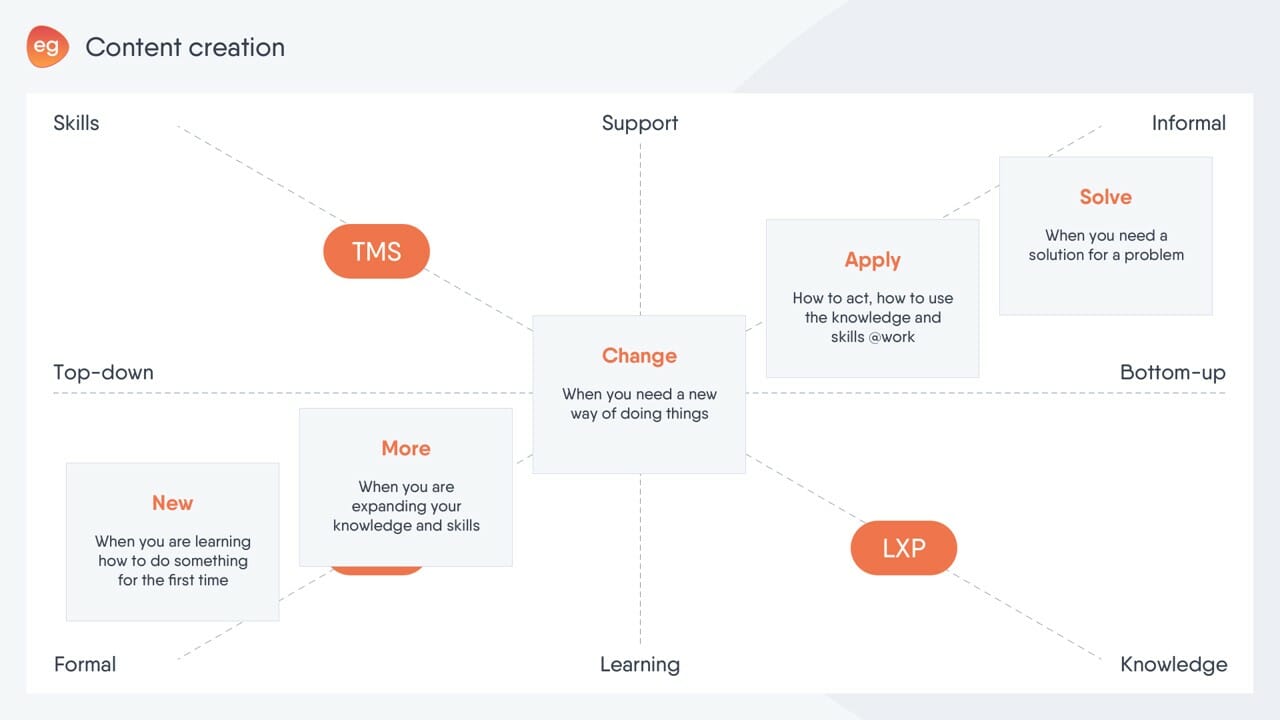
In the past, most learning activities would have fallen within the formal quadrant – owned by the L&D department, who would have offered face-to-face training and/or courses in an LMS.
But recently, the majority of queries in the workplace fall within the Change, Apply and Solve categories – which all require mostly informal, rather than formal support.
Performance Support Systems (PPS) facilitate learning while working. They provide a lot of relevant information to help employees increase their performance. We believe that the focus for the longer term will be on these systems and performance support.
In part 3, the final article in this series, we’ll look at how this all impacts the way we create learning content.

